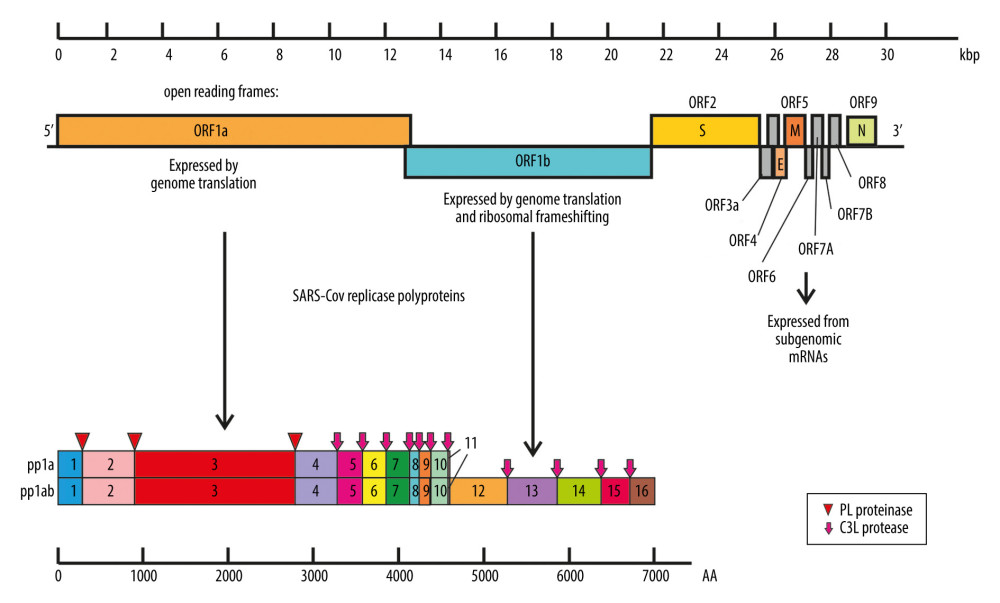13 December 2020: Review Articles
Does Virus-Receptor Interplay Influence Human Coronaviruses Infection Outcome?
Jolanta Bratosiewicz-Wąsik 1ABEF* , Tomasz J. Wąsik 2ABEFGDOI: 10.12659/MSM.928572
Med Sci Monit 2020; 26:e928572

Figure 1 Coronaviruses genome organization. Localized from the 5′ end, there are 2 open reading frames (ORF) – ORF1a and ORF1b – which encode polyproteins pp1a and pp1ab that are sequentially cleaved to release 16 or sometimes 15 functional nonstructural proteins constituting the replication-transcription complex (RTC). ORFs localized by the 3′ end encode structural and regulatory proteins: spike (S), ORF3A, envelope (E), membrane (M), ORF5, ORF6, ORF7A, ORF7B, ORF8, and nucleocapsid (N). The bottom panel shows the proteolytic processing of the pp1a and pp1ab polyproteins. The numbers of polyproteins pp1a and pp1ab segments correspond to nonstructural proteins: 3 – PLpro, papain-like proteinase; 5–3CLpro, 3C-like protease; 12 – RdRp, RNA-dependent RNA polymerase; 13 – HEL1, superfamily 1 helicase; 14 – ExoN, exoribonuclease, N7-MT, N7-methyl transferase; 15 – endoU, uridylate-specific endoribonuclease; and 16–2′-O-MT, 2′-O-methyl transferase. Functions of remaining nonstructural proteins are described in Table 1.


